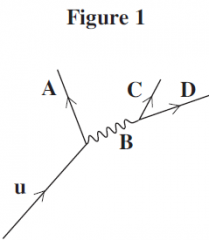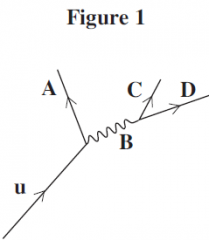![]()
![]()
![]()
Use LEFT and RIGHT arrow keys to navigate between flashcards;
Use UP and DOWN arrow keys to flip the card;
H to show hint;
A reads text to speech;
11 Cards in this Set
- Front
- Back
|
A calcium atom looks like this 48 Ca 20
How many protons, neutrons and electrons are there (3 marks) |
blank |
|
|
Calculate the charge of a 48 Ca 20 ion (1 mark) |
blank |
|
|
Calculate the specific charge of a 48 Ca 20 ion (2 marks) |
blank |
|

A positron is emitted when a proton changes to a neutron. Identify particles A, B, C and D |
blank |
|

State the interaction responsible for this process (1 mark) |
blank |
|

What letter represents an exchange particle (1 mark) |
blank |
|
|
State one difference between this exchange particle and a photon (1 mark) |
blank |
|
|
Energy and momentum must be conserved in this process.
State two other things that need to be conserved and show that they are being conserved in the process (2 + 2 marks) |
blank |
|
|
Hadrons and leptons are two groups of particles. Write an account of how particles are placed into one or other of these two groups. Your answer should include: Type of interactions used to classify particles Examples of each type of particle Similarities between two groups How one group may be further divided
|
blank |
|
|
Name one particle and one antiparticle (1 mark) |
blank |
|
|
State one difference between this particle and its antiparticle (1 mark) |
blank |

